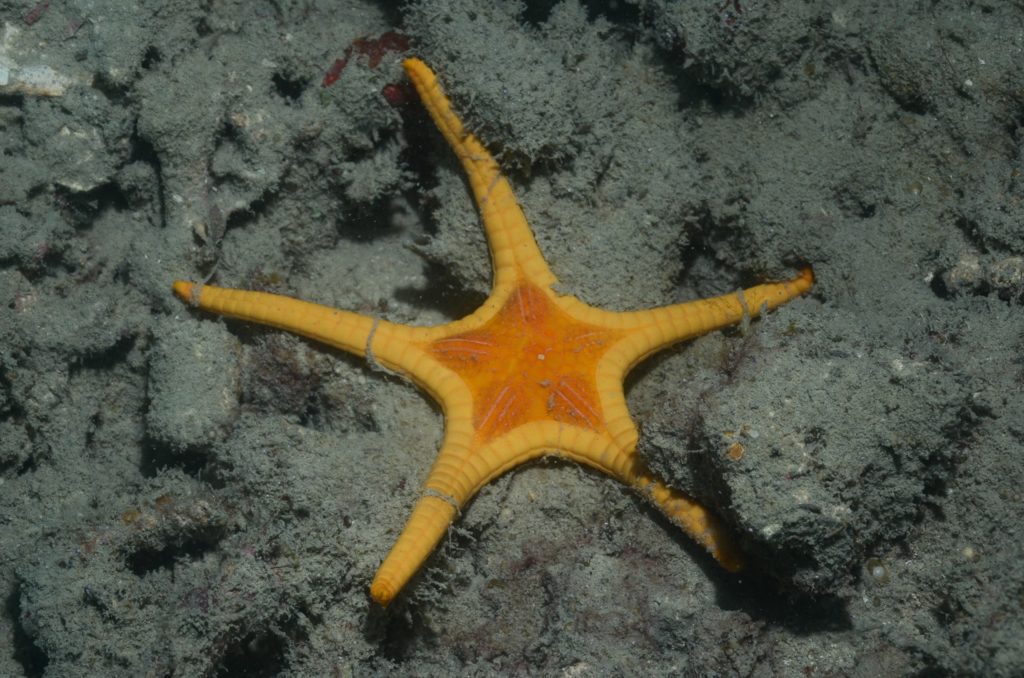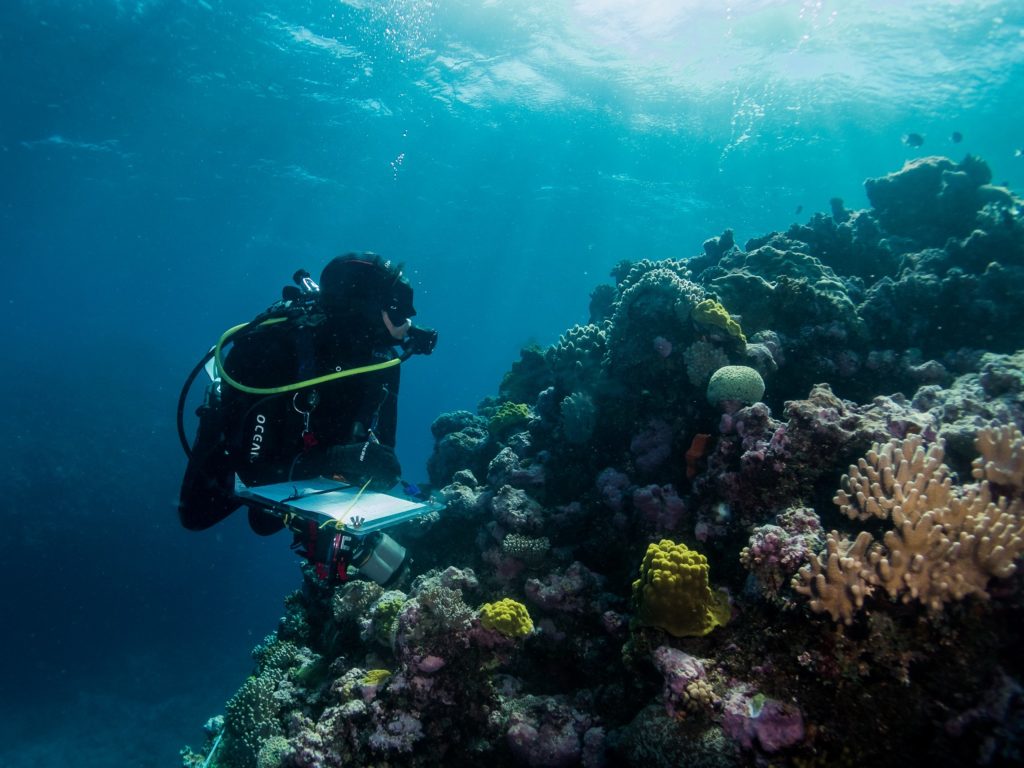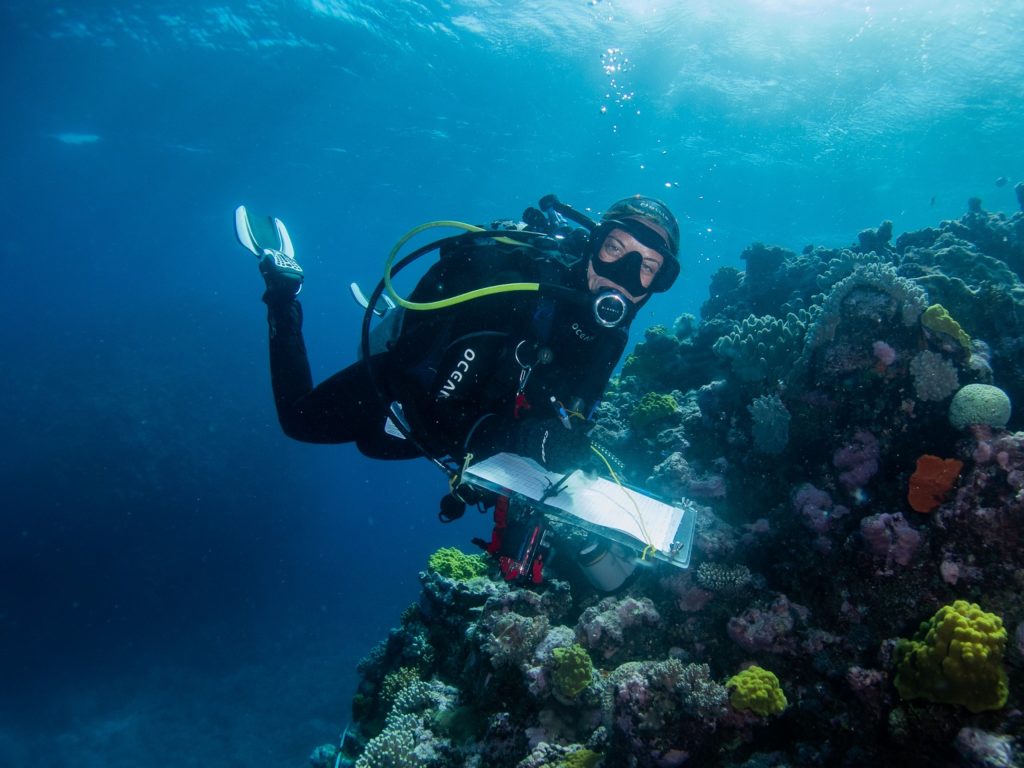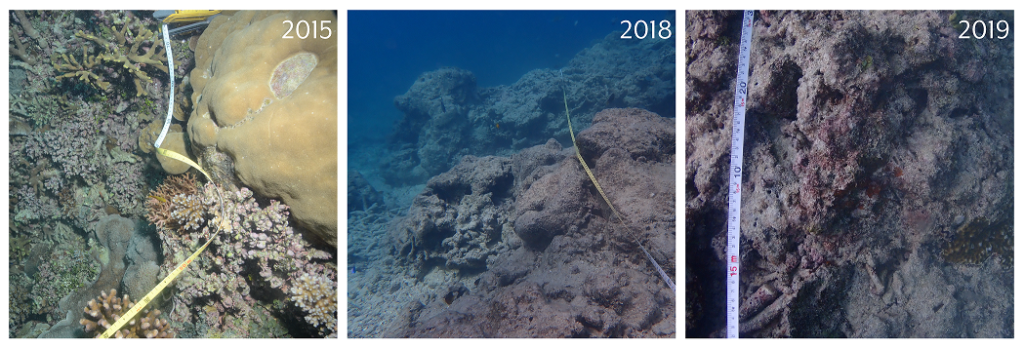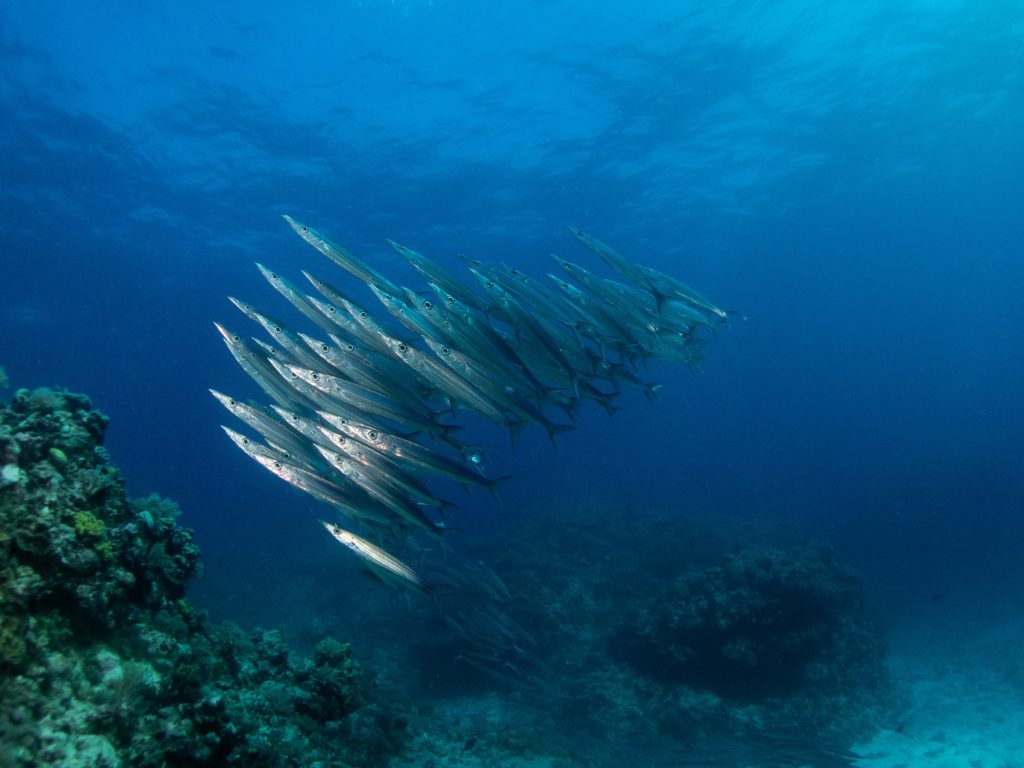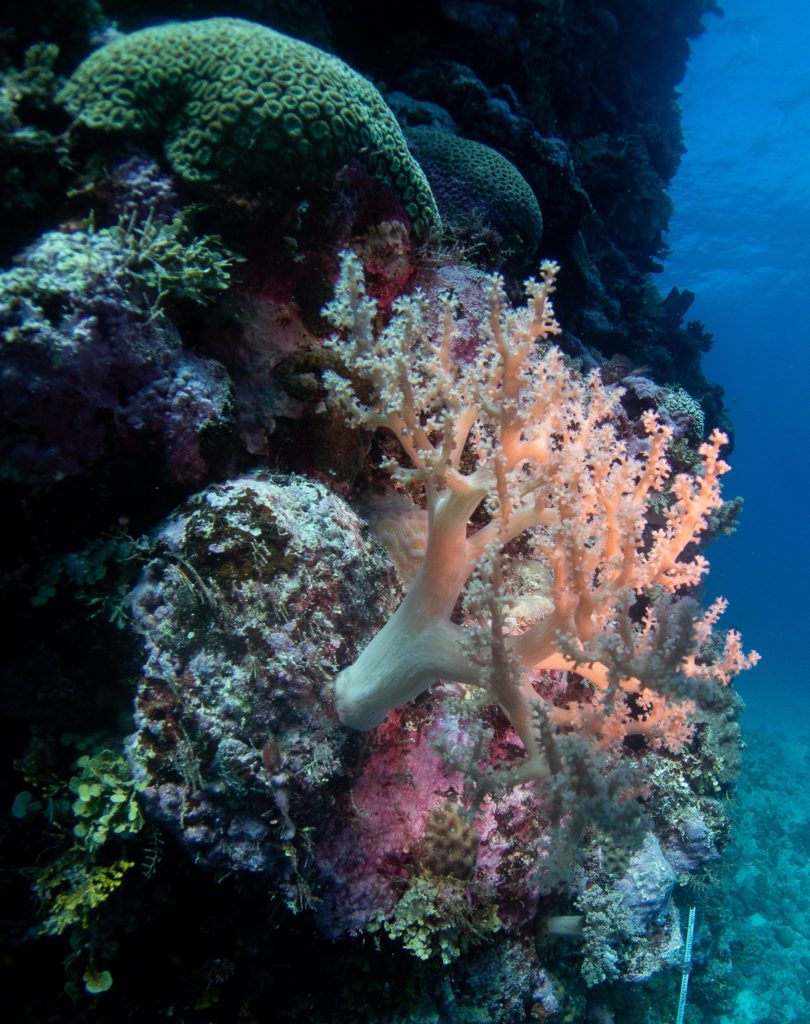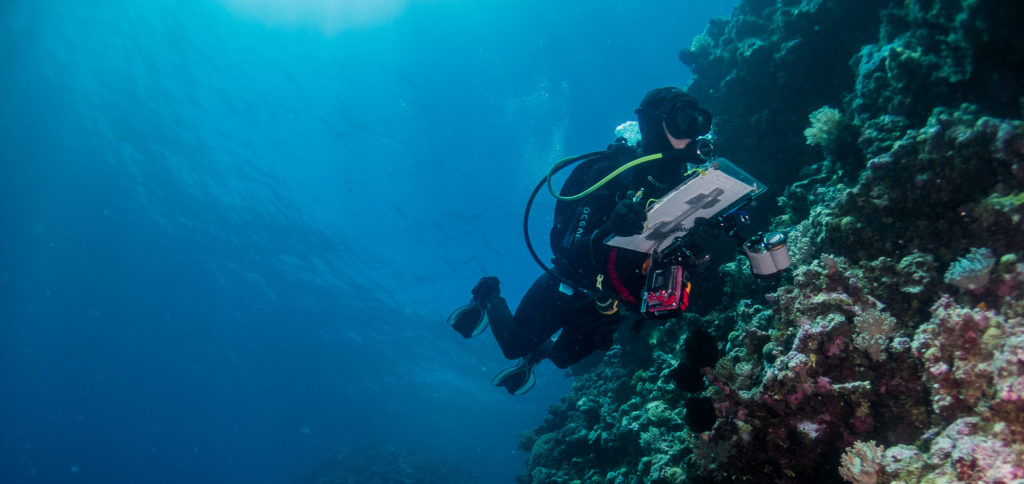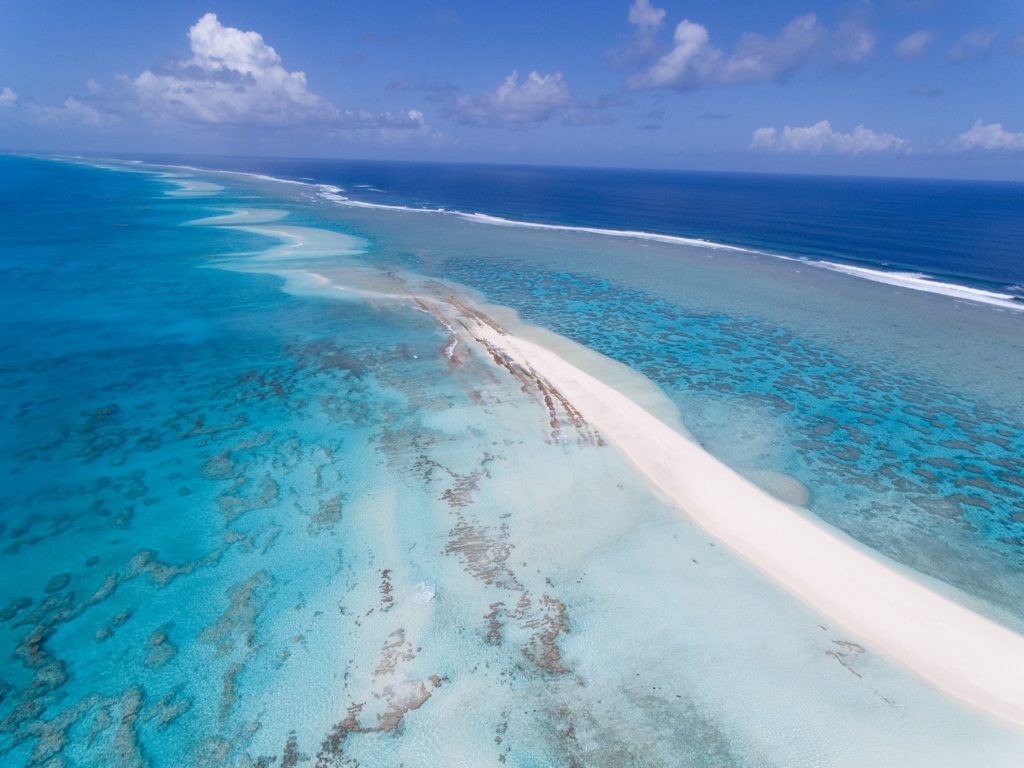This May, a group of Reef Life Survey divers aboard the research catamaran Eviota made sail for reefs on the central Great Barrier Reef (GBR) and some of the remote RLS sites in the Coral Sea. The ultimate goal of the expedition was to resurvey sites that had been surveyed by RLS divers in previous years but had recently been affected by bleaching events and tropical cyclones.
The team, which included RLS founder Graham Edgar, long-term RLS divers Scott Ling and Meryl Larkin, and RLS newbie Lara Denis-Roy, set sail on the 4th of May from Airlie Beach, reaching their first survey location on the northern edge of Hayman Island that day. Anchoring at Blue Pearl Bay, the team surveyed three sites despite poor visibility, and recorded a range of species, including the impressive Icon star (Iconaster longimanus).

After 2 days anchored at Blue Pearl Bay, the winds swung around to the south-southeast at 20 knots, providing the team with just enough tacking angle for a speedy 370 km eastward journey out to Marion Reef in the Coral Sea. While live coral cover at Marion Reef was fairly low – a consequence of recent warm waters and Cyclone Debbie passing two years earlier – signs of staghorn coral recruits up to 30 cm suggest the reef is rapidly recovering.
One noticeable difference in the sites at Marion Reef compared to previous years was fewer seasnakes. Eight years ago, this was the most densely populated reef system in the Coral Sea, with numerous snakes curling around divers on most dives. However, the crew recorded only 2 species across all the sites surveyed this time around, with only single individuals of the Olive Sea Snake (Aipysurus laevis) recorded at most sites. Regardless, all divers greatly enjoyed the brilliant 30-40 m visibility and vibrant Coral Sea fish life.
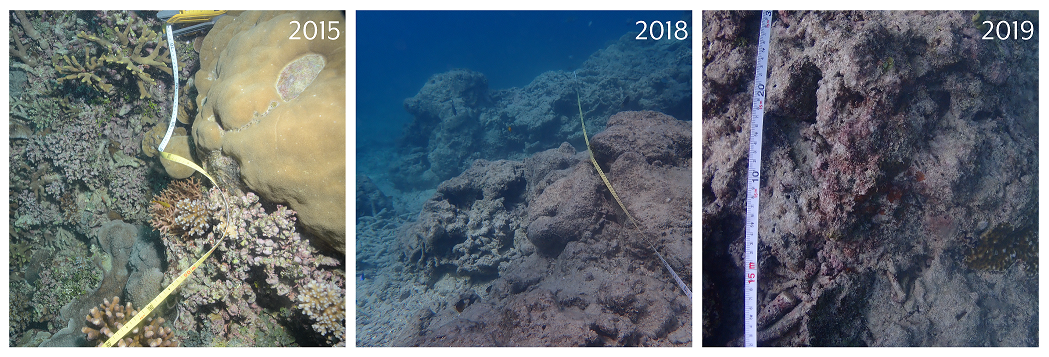
After surveying Marion Reef, the team headed west into the central GBR where they surveyed Bait Reef. After intensive recent bleaching events and cyclone Debbie, Bait Reef has experienced massive coral loss. Staghorn coral, which was once abundant, was almost completely missing last year when we visited, and unfortunately had not recovered much prior to this year’s visit. While the central and inner GBR reefs were not as exciting to dive as those in the Coral Sea, our surveys tracking and understanding the extent of change are critically important to managers. Hopefully, when the RLS crew returns next year the reefs will show good signs of their former glory.
This trip represented the fifth time that some sites at Marion Reef have been monitored, providing another valuable time step in the monitoring of reef biodiversity in the Coral Sea Marine Park, managed by Parks Australia.
